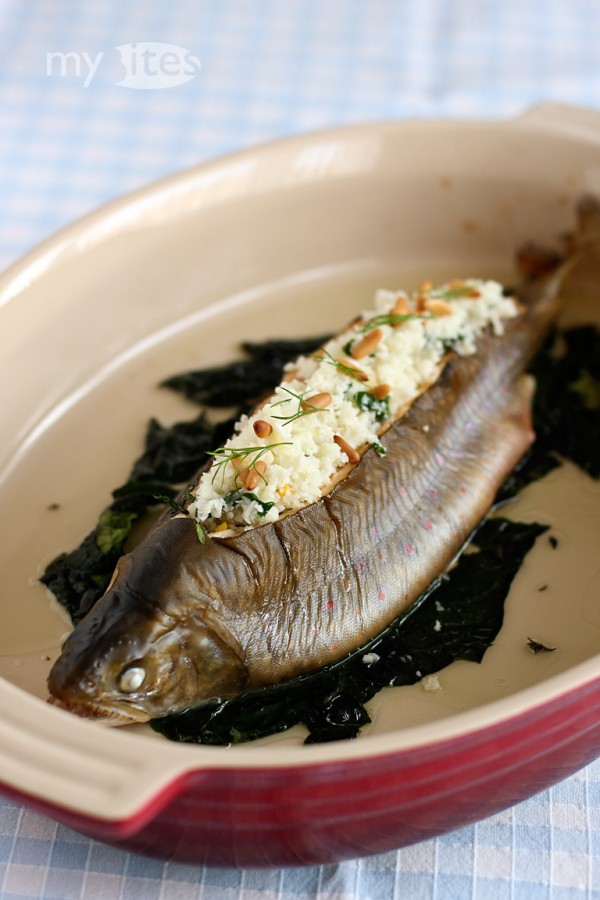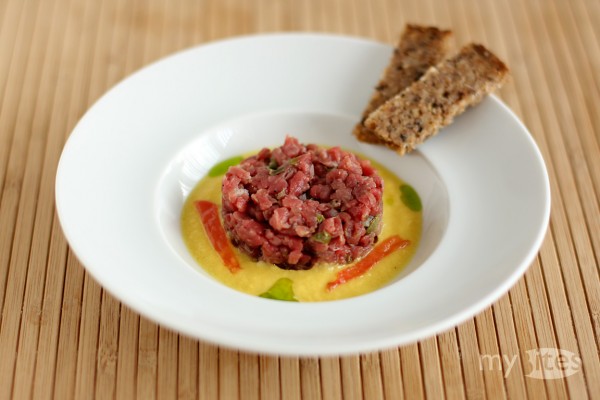It’s almost 4 years now that I filleted a whole fish for the first time in my life. Since then I stopped counting the number of fish I’ve filleted and really gained routine in getting clean and beautiful cuts as result. Nowadays I prefer to buy whole fish at the local market, because this way I can use the bones, head, tail and fins as well to cook a flavorful fish stock, which really enhances sauces, risottos and soups. I prefer to buy local and traditional fish such as trout, char or carp. Sea fish are no options for me, because I don’t have any reliable source for buying fresh seafood, and my hometown Erlangen is simply too far away from the sea.
Regarding the connection between seafood consumption and the distance to the sea, I had a surprising experience a few years ago in Italy, which I like to bring up every time I’m asked about seafood. I was lucky to get a publication accepted at a major conference in computer science, which was held in the beautiful city of Florence. Of course, I used the lunch breaks and the evenings to explore the local restaurant scene. I was even more fortunate having a receptionist at my hotel who was actually a native Florentine citizen. As almost everybody in Italy, he loved to eat, and especially to eat well. So from the first day on I consulted him which restaurant he recommends me to visit. I wasn’t a regular tourist, I really wanted to get to know the real local cuisine. He always told me only the next location I should go to and based on my report the next day he recommended me the next place to visit. This tactic was quite comprehensible, because I could have been a usual tourist, who actually might have been afraid of tripe, wild boar or other local specialties. But he pretty soon learned, that I was after the real local cuisine.


